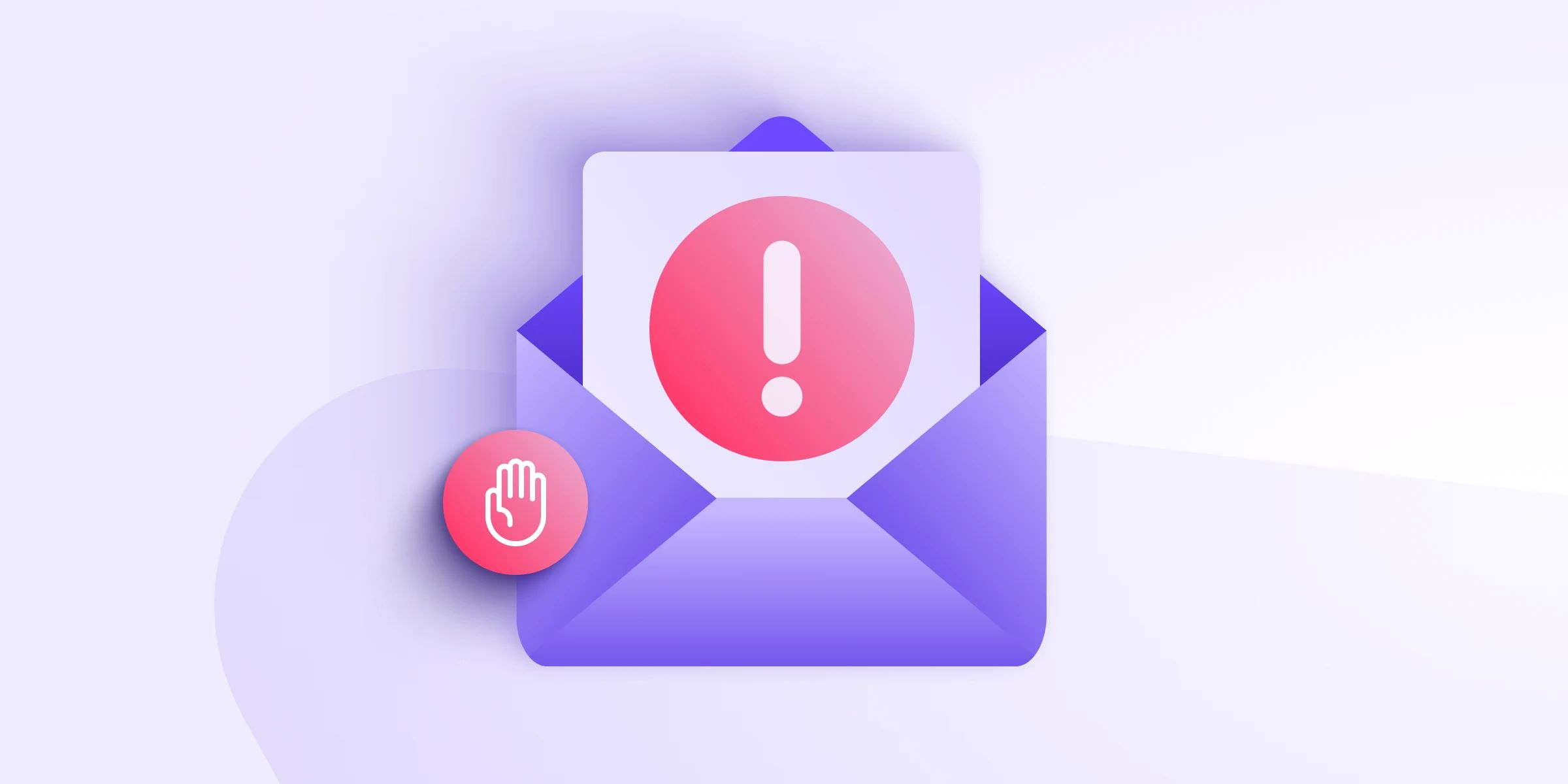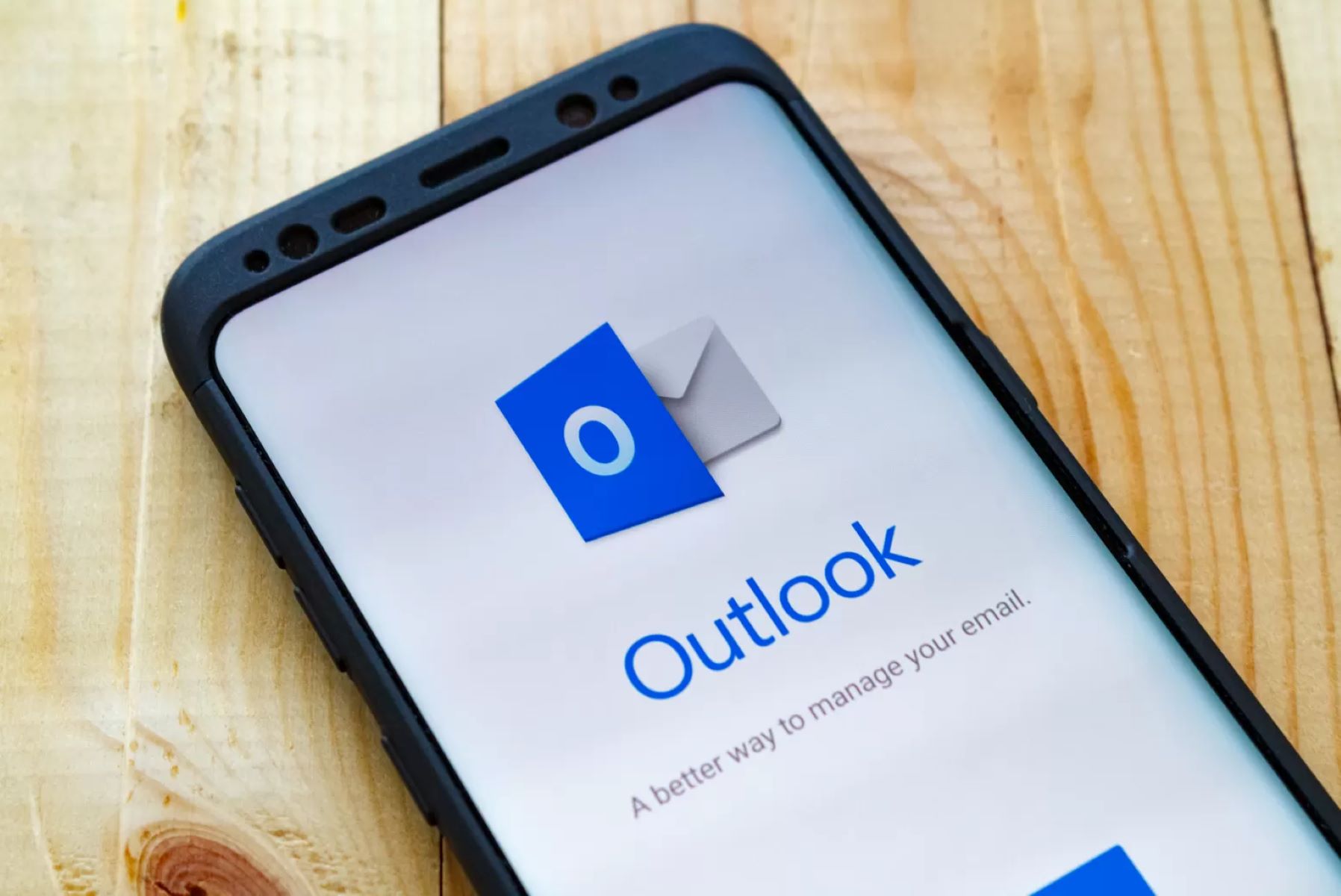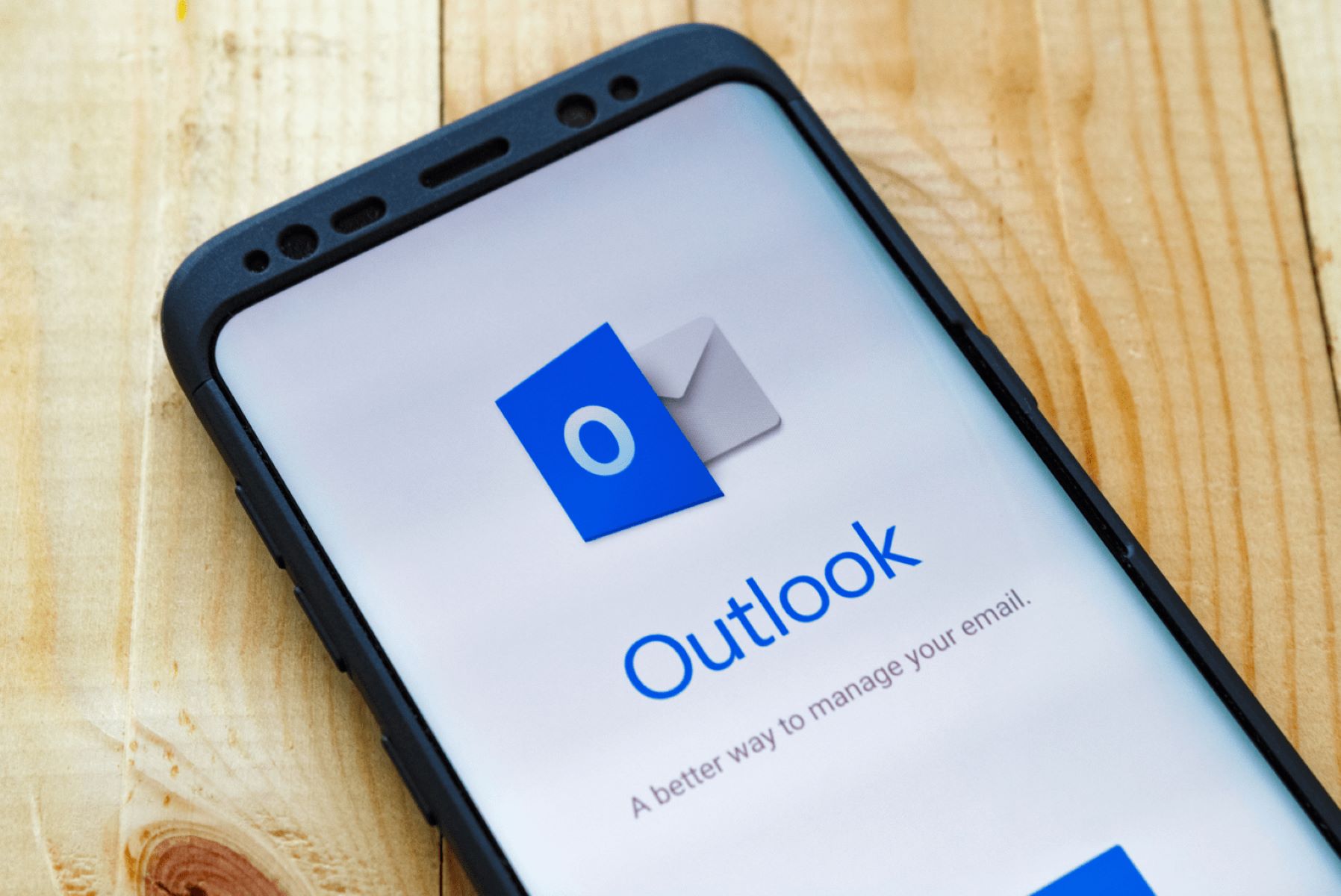Introduction
Email has revolutionized communication, allowing us to easily connect with friends, family, and colleagues around the world. However, along with the numerous legitimate emails we receive, there has been a surge in the number of unwanted junk emails that flood our inboxes, causing frustration and wasting valuable time. Fortunately, there are effective steps you can take to stop getting junk email and regain control over your inbox.
Junk email, also known as spam, includes unsolicited messages that are often sent in bulk to a large number of recipients. These emails can range from annoying promotions and advertisements to malicious phishing attempts. Not only do they clutter your inbox, but they can also pose a security risk. Therefore, it is crucial to implement strategies to minimize the influx of junk email and protect your personal information.
In this article, we will explore ten practical steps you can take to stop getting junk email. By following these recommendations, you can significantly reduce the amount of unwanted emails you receive and ensure that your inbox remains a streamlined and secure space.
Step 1: Unsubscribe from Mailing Lists
One of the primary sources of junk email is mailing lists that you may have inadvertently subscribed to. These can include newsletters, promotional offers, and updates from various online services. To tackle this issue, start by actively unsubscribing from these mailing lists.
Check your inbox and look for the unsubscribe links or buttons typically found at the bottom of the email. Clicking on these links will usually take you to a page where you can easily opt-out of further emails. Take the time to go through your emails and unsubscribe from any mailing lists that are no longer relevant or of interest to you.
However, exercise caution when unsubscribing from unknown or suspicious emails. Some spammers use unsubscribe links as a way to confirm that your email address is active, potentially leading to even more spam. To avoid this, only unsubscribe from reputable and legitimate sources.
If you find it challenging to locate the unsubscribe links or if the number of emails is overwhelming, consider using email management tools that can help streamline this process. These tools can automate the unsubscribing process, making it easier and more efficient.
Remember that unsubscribing from one mailing list may not stop all unwanted emails. You may need to repeat this process periodically, especially if you have previously subscribed to multiple mailing lists. Regularly checking and managing your email subscriptions will help keep your inbox free from unnecessary clutter.
Step 2: Use a Separate Email Address
Using a separate email address specifically for online services, promotions, and subscriptions can be an effective way to prevent your primary email account from getting inundated with junk email. By creating a dedicated email address, you can have better control over which emails you receive and minimize the risk of your personal or work address being compromised.
When signing up for online services, registering on websites, or making online purchases, use this secondary email address instead of your primary one. This way, if the secondary email address starts receiving spam, you can easily identify the source and take necessary actions without affecting your primary inbox.
Creating a separate email address is relatively simple. You can choose from a variety of free email providers and sign up for a new account. It is advisable to select a username that is distinguishable from your primary email address to avoid any confusion. Additionally, consider using a strong and unique password to protect the security of this secondary account.
Managing a separate email address may require some additional effort, but it can significantly reduce the amount of junk email in your primary inbox. It allows you to keep your personal and important emails separate from the promotional offers and subscriptions you’ve signed up for.
Remember to regularly check and clean your secondary email account as well. Remove any subscriptions or services that you no longer use or find relevant. By keeping this email address organized and updated, you can effectively maintain control over the emails you receive.
Step 3: Be Cautious When Signing Up for Online Services and Promotions
When signing up for online services, promotions, and freebies, it’s important to exercise caution and be mindful of where you share your email address. Many spammers and marketers use deceptive tactics to collect email addresses and bombard unsuspecting individuals with junk email. To prevent this, follow these tips:
1. Read the Privacy Policy: Before providing your email address, take a moment to read the privacy policy of the website or service. Look for indications that your email address will be shared with third parties or used for promotional purposes. If you’re uncomfortable with a website’s privacy practices, reconsider sharing your email address.
2. Opt-Out of Receiving Promotions: When signing up for online services and promotions, double-check whether there is an option to opt-out of receiving additional promotional emails. Some websites automatically add you to their mailing lists, so be sure to uncheck any pre-selected subscription boxes if you don’t want to receive further emails.
3. Avoid Sharing Your Email Address Inappropriately: Be cautious about sharing your email address on public forums, social media platforms, or any place where it can be easily accessed by unknown individuals. Spammers often scour the internet for exposed email addresses, so minimize the risk by only sharing your email address with trusted sources.
4. Use Disposable Email Addresses: Consider using temporary or disposable email addresses when signing up for one-time promotions or services that you don’t plan on using long-term. There are numerous online services that provide temporary email addresses that can help protect your primary email account from receiving unwanted emails.
Being cautious when sharing your email address can significantly reduce the amount of junk email you receive. By being selective and mindful about where and how you share your email address, you can prevent it from falling into the hands of spammers and marketers who flood your inbox with unwanted messages.
Step 4: Set Up Email Filters and Rules
To further manage and reduce the presence of junk email in your inbox, take advantage of the email filtering and rule-setting features offered by your email provider. These features allow you to automatically sort and redirect incoming emails based on specific criteria, such as sender, subject, or keywords. Here’s how you can set up email filters and rules:
1. Identify Junk Email Patterns: Take note of common characteristics or patterns exhibited by junk email, such as specific keywords, sender domains, or subject lines. By understanding these patterns, you can create more effective filters and rules.
2. Access Email Settings: Depending on your email provider, the settings section may vary, but you should be able to find options related to filters and rules. Look for terms such as “Filters,” “Rules,” or “Blocklist.”
3. Create Filters and Rules: Create filters based on the criteria you identified in step 1. For example, you can set up a rule to automatically move emails from specific senders directly to the spam folder or delete emails containing certain keywords. Some email providers also offer the option to block specific senders or domains entirely.
4. Test and Refine: After setting up filters and rules, periodically review your spam folder to ensure that legitimate emails aren’t being caught by mistake. Adjust and fine-tune the filters as needed to achieve the desired results.
5. Regularly Update Filters: Keep up with new spam patterns and adjust your filters accordingly. Spammers are constantly changing their tactics, so updating your filters will help ensure that you stay ahead of the game and continue to effectively manage junk email.
By setting up email filters and rules, you can automate the process of identifying and handling junk email. This significantly reduces the time and effort required on your part to manually sift through your inbox and delete or sort unwanted messages. As a result, your inbox will be more organized, and you will have a clearer view of important and relevant emails.
Step 5: Never Reply to Spam Emails
When dealing with junk email, it is essential to remember one golden rule: never reply to spam emails. Replying to spam messages, even if it’s to unsubscribe or ask the sender to stop, can have unintended consequences and potentially worsen the situation. Here’s why you should avoid responding to spam:
1. Confirmation of a Live Email Address: Replying to a spam email, even to request removal from their list, validates that your email address is active. This information can be valuable to spammers, leading to an increase in the amount of junk email you receive.
2. Potential for Amplified Spam: Some spammers sell or share email addresses with other spammers. By replying to a spam email, you may unknowingly be contributing to the spreading of your email address among different spamming networks, resulting in even more unwanted emails.
3. Phishing Scams and Malicious Intentions: Replying to spam emails can expose you to phishing scams or malware. Some spammers use deceptive tactics to trick recipients into providing personal information or downloading malicious attachments. By responding to these emails, you may inadvertently put yourself at risk.
4. Lack of Legitimacy: Most spam emails originate from unauthorized and illegitimate sources. Attempting to engage with these senders is unlikely to yield any fruitful outcome. Legitimate organizations typically have more reliable and user-friendly mechanisms for opting out of their mailing lists.
Instead of replying to spam emails, use the methods outlined in earlier steps to unsubscribe from mailing lists or set up filters to automatically redirect spam emails to your junk or spam folder.
Remember, engaging with spam emails only serves to perpetuate the cycle and potentially open yourself up to unnecessary risks. By adopting a strict policy of never replying to spam, you can effectively protect your email address and reduce the impact of junk email on your inbox.
Step 6: Avoid Displaying Your Email Address Publicly
One effective way to minimize the amount of junk email you receive is to avoid displaying your email address publicly. When your email address is readily available to spammers, it becomes an easy target for automated bots that scrape websites, forums, and social media platforms for email addresses. Here are some tips to keep your email address private:
1. Utilize Contact Forms: Instead of providing your email address directly on your website or online profiles, use contact forms that allow users to send messages without revealing your email address. Contact forms serve as a barrier to keep your email address hidden from malicious bots.
2. Use Disposable Email Addresses: If you need to provide an email address for a specific purpose, consider using a disposable or temporary email address. These services allow you to create a temporary email account that can automatically forward messages to your primary inbox while keeping your actual email address private.
3. Be Cautious with Online Listings: When posting classified ads, business listings, or any public information that requires an email address, use discretion. Consider using an alternative email address or even a dedicated phone number instead of your primary email address. This helps to protect your personal inbox from potential junk email.
4. Check Website Privacy Settings: Review your website’s privacy settings if you have a personal or professional webpage. Ensure that your email address is not included in publicly visible areas or HTML source code, as this makes it easier for spammers to identify and target your email address.
5. Minimize Email Address Exposure on Social Media: Review and adjust your social media privacy settings to limit the accessibility of your email address. Avoid including your email address in public posts or bios, as this can make it more vulnerable to scraping bots and unsolicited spam.
By being cautious and mindful of where you expose your email address, you can significantly reduce the likelihood of receiving junk email. Protecting the privacy of your email address is key to maintaining control over your inbox and ensuring that it remains free from unwanted clutter.
Step 7: Use a Reputable Spam Filter
To effectively combat junk email, utilizing a reputable spam filter can make a significant difference in reducing the amount of unwanted messages that reach your inbox. A spam filter is a software or service that automatically analyzes incoming emails and identifies those that are likely to be spam. Here’s why using a reputable spam filter is essential:
1. Advanced Detection Techniques: Reputable spam filters employ advanced algorithms and techniques to recognize patterns and characteristics commonly associated with spam emails. This includes analyzing email contents, sender reputation, and other factors that help determine the likelihood of an email being spam.
2. Customizable Filtering Options: Spam filters often provide customizable options, allowing you to fine-tune their behavior based on your preferences. You can choose to automatically send suspected spam messages to a separate folder or directly delete them, preventing your inbox from being cluttered with unwanted emails.
3. Real-Time Updates: Spam filters constantly receive updates to their databases, ensuring that they stay up-to-date with the latest spamming techniques and patterns. This proactive approach helps identify and block new types of spam emails, providing an added layer of protection against evolving spamming tactics.
4. Reduced False Positives: While it’s crucial to have an effective spam filter, it’s equally essential to minimize false positives. False positives occur when legitimate emails are mistakenly flagged as spam. Reputable spam filters are designed to minimize the occurrence of false positives, ensuring that important messages don’t get filtered out by mistake.
5. Integrated Protection: Some email providers offer built-in spam filters as part of their services. These filters seamlessly integrate into your email platform, providing convenient and continuously updated protection without the need for additional software installations.
Before choosing a spam filter, research and choose one from a reputable provider that has a track record of effectively filtering out spam. Read reviews, compare features, and consider the level of customization and control the spam filter provides.
Remember that no spam filter is 100% foolproof, so it’s important to periodically check your spam folder for any legitimate emails that may have been misclassified. Regularly reviewing and updating the settings of your spam filter will help optimize its effectiveness while keeping your inbox free from junk email.
Step 8: Report Spam Emails to Your Email Provider
When dealing with junk email, it’s crucial to actively report spam emails to your email provider. Most reputable email services and providers have dedicated mechanisms in place for reporting spam, as they strive to improve their filtering systems and protect their users from unwanted messages. Here’s why reporting spam emails is important:
1. Improves Anti-Spam Systems: Reporting spam emails helps your email provider identify the latest spamming techniques and patterns. By notifying them of spam messages that have made it through their filters, you contribute to the ongoing efforts to enhance their anti-spam systems and algorithms.
2. Enhances Filtering Accuracy: Your reports assist in fine-tuning the email provider’s filtering accuracy. By flagging specific emails as spam, you provide valuable feedback that helps their systems better differentiate between legitimate emails and junk email, reducing the chances of false positives in the future.
3. Protects the Community: Reporting spam not only benefits you but also helps protect other users within your email provider’s community. By alerting your email provider to spam emails, you contribute to a safer and more reliable email experience for everyone.
Reporting spam to your email provider is typically straightforward. Look for options like “Report as spam” or “Mark as spam” in your email interface or within individual message options. Depending on the provider, they may ask for additional details or allow you to provide feedback on why you believe the email is spam.
Keep in mind that reporting spam emails does not automatically block or prevent them from landing in your inbox. The email provider uses these reports to improve their filtering systems overall. To further prevent future messages from specific senders or domains, consider utilizing the blocking or filtering options offered by your email provider.
By actively reporting spam emails to your email provider, you play an active role in enhancing the effectiveness of their spam filters. Collaborating with your email provider ensures a safer and more enjoyable email experience for all users, ultimately reducing the impact of junk email on your inbox.
Step 9: Keep Your Devices and Software Updated
Keeping your devices and software up to date is an important step in preventing junk email and maintaining overall online security. Regular updates provide crucial security patches and bug fixes that help protect your devices from vulnerabilities that spammers and hackers can exploit. Here’s why staying up to date is essential:
1. Security Vulnerabilities: Outdated operating systems, email clients, and applications often have security vulnerabilities that can be exploited by spammers and malware creators. By keeping your devices and software updated, you reduce the risk of being targeted by spam campaigns and other malicious activities.
2. Improved Spam Filtering: Updates to email clients and anti-spam software often include enhancements to the spam filtering algorithms. These updates help improve the accuracy and effectiveness of detecting and filtering out junk email, keeping your inbox cleaner and more organized.
3. Enhanced Privacy Features: Software updates often include new features and privacy settings that can help you control the flow of spam and maintain better control over your email inbox. By taking advantage of these updates, you can customize your email settings to optimize spam protection.
4. Malware Protection: Outdated software may lack the latest malware detection and prevention mechanisms. Regular updates ensure that your devices have the best available protection against malicious software that can be distributed via email attachments or phishing links.
Make it a habit to regularly check for and install updates on all your devices, including computers, smartphones, tablets, and other internet-connected devices. Enable automatic software updates whenever possible to ensure you don’t miss critical security patches.
Additionally, keep your web browser and browser extensions up to date. Browsers are often targeted by spammers and may have vulnerabilities that can be exploited. Regular updates help ensure your browsing experience remains secure and protected.
By staying up to date with the latest software and security updates, you create a stronger line of defense against spam emails and other online threats. Prioritize regular updates to ensure the highest level of security and protect yourself from the ever-evolving tactics employed by spammers and cybercriminals.
Step 10: Educate Yourself on Common Phishing Tactics
As spam emails become increasingly sophisticated, it’s crucial to educate yourself about common phishing tactics to protect yourself from falling victim to these scams. Phishing is a fraudulent practice where cybercriminals attempt to deceive individuals into disclosing sensitive information or performing actions that could compromise their security. By familiarizing yourself with common phishing tactics, you can better identify and avoid these malicious attempts. Here are some important points to consider:
1. Suspicious URLs and Links: Phishing emails often include deceptive URLs or links that appear legitimate but redirect to malicious websites. Exercise caution when clicking on links in emails, especially from unknown senders. Hover over links to check the actual destination before clicking, and avoid providing sensitive information on non-secure websites.
2. Phishing Emails Impersonating Legitimate Sources: Be wary of emails that claim to be from trusted organizations such as banks, government agencies, or well-known companies. If an email asks for personal information, financial details, or login credentials, it’s important to verify the legitimacy of the request. Contact the organization directly through official channels to confirm the email’s authenticity.
3. Urgent or Threatening Language: Phishing emails often use urgent or alarming language to create a sense of urgency and prompt quick action. Beware of emails that threaten account closure, password expiration, or request immediate payment. Legitimate organizations usually communicate important matters through official channels rather than unexpectedly via email.
4. Attachments and Downloads: Exercise caution when opening email attachments or downloading files, especially if they come from unknown sources. Malicious attachments can contain malware or ransomware that can harm your device or compromise your data. Only open attachments from trusted sources and ensure they are scanned for viruses before opening.
5. Misspellings and Grammatical Errors: Many phishing emails contain spelling mistakes, grammatical errors, and awkward phrasing. Legitimate organizations typically take care to ensure their communications are error-free. If an email contains multiple typos or grammatical errors, it’s a red flag that it may be a phishing attempt.
6. Requests for Personal Information: Legitimate organizations rarely request personal information or login credentials via email. Be cautious if an email asks you to provide sensitive data such as your Social Security number, credit card details, or banking information. When in doubt, contact the organization directly through trusted channels to verify the authenticity of the request.
By familiarizing yourself with these common phishing tactics, you can develop a healthy skepticism towards suspicious emails and protect yourself from falling prey to scams. Stay informed about the latest phishing trends and techniques, as cybercriminals constantly evolve their tactics to deceive unsuspecting individuals.
Remember, your vigilance and knowledge are powerful tools in the fight against phishing attempts. By practicing safe email habits and staying informed, you can greatly reduce the risk of becoming a victim of online scams.
Conclusion
Dealing with junk email can be frustrating and time-consuming, but by following these ten steps, you can regain control over your inbox and significantly reduce the influx of unwanted messages. Let’s recap the key points:
Step 1: Unsubscribe from Mailing Lists: Take the time to unsubscribe from mailing lists that you no longer find relevant or useful.
Step 2: Use a Separate Email Address: Create a separate email address for online services and promotions to keep your primary inbox clutter-free.
Step 3: Be Cautious When Signing Up for Online Services and Promotions: Carefully evaluate websites’ privacy policies and avoid sharing your email address unnecessarily.
Step 4: Set Up Email Filters and Rules: Automate the process of sorting and managing your emails by setting up filters and rules in your email client.
Step 5: Never Reply to Spam Emails: Avoid engaging with spam emails as it can confirm your active email address and potentially lead to more spam.
Step 6: Avoid Displaying Your Email Address Publicly: Be cautious about where you share your email address to prevent it from being harvested by spammers.
Step 7: Use a Reputable Spam Filter: Take advantage of a reliable spam filter to improve the accuracy and effectiveness of detecting and filtering out junk email.
Step 8: Report Spam Emails to Your Email Provider: Actively report spam emails to your email provider to contribute to their ongoing efforts in enhancing spam filters.
Step 9: Keep Your Devices and Software Updated: Regularly update your devices and software to protect against security vulnerabilities and prevent spam attacks.
Step 10: Educate Yourself on Common Phishing Tactics: Stay informed about phishing techniques to recognize and avoid falling victim to these scams.
By implementing these steps and staying vigilant, you can effectively reduce the amount of junk email you receive and maintain a cleaner, more secure inbox. Remember, spam email is an ongoing battle, so it’s important to stay proactive in managing your email and staying educated about the latest spamming techniques.
Take control of your inbox and enjoy a clutter-free email experience by implementing these strategies and staying proactive in the fight against junk email.

























